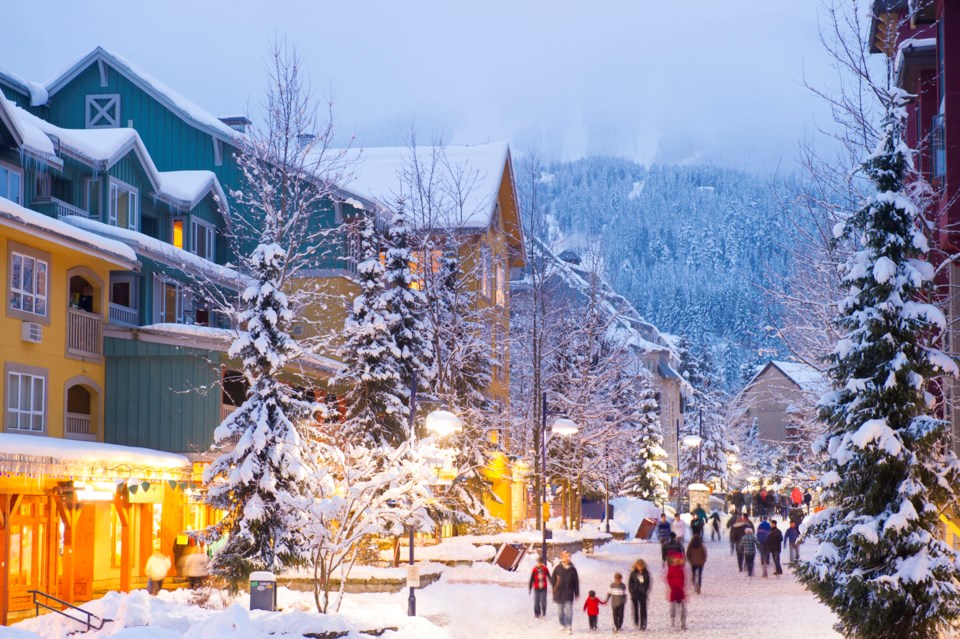The Sea to Sky corridor’s population has grown significantly in the past five years, and Whistler is no exception.
Data released Feb. 9 from the 2021 census shows the municipality’s permanent population increased to 13,982 last year. That’s up 19 per cent since the last census was conducted in 2016, when Whistler’s population stood at 11,746.
“Whistler is a great place to live,” said Mayor Jack Crompton. “I think COVID has contributed to our growth and population— people can live and work where they want to.”
Those figures are in line with the Resort Municipality of Whistler's Annual Estimated Population Equivalent, which listed an estimated permanent population of 13,948 in 2020. Whistler's total estimated population equivalent, which includes seasonal residents and the average number of visitors in Whistler on any given day in addition to permanent residents, fell to 29,264 in 2020 after reaching 36,426 in 2019.
While the growth confirmed by the 2021 census is what the RMOW expected, “it doesn’t make it any less significant or important to take action,” said Crompton.
'Whistler’s never been interested in unconstrained growth'
Managing Whistler’s growth has long been a topic of conversation at municipal hall. Crompton cited the creation of a Strategic Planning Committee at the beginning of council’s term and the construction of a Balance Model—which seeks to offer insight into Whistler’s growth and development and what appropriate action could look like—as “the best tool we have in our toolbox.”
There were 10,065 private dwellings in Whistler counted by the census in 2021. Of those, 5,597 are occupied by usual residents (i.e. permanent residents).
As the resort remains committed to housing 75 per cent of its workforce locally, “Whistler’s never been interested in unconstrained growth. Our focus has been on limits to growth and how we can ensure that we can be the place that everyone moved here for,” said Crompton, adding, "We don't want to be a city in the mountains.”
But as Whistler’s growth eventually levels off due to these limits, much of the increased demand for the Sea to Sky lifestyle will logically be absorbed by neighbouring municipalities.
Growth pattern predicted to continue in Pemberton as population climbs more than 32%
While Squamish’s population reached 23,819 in 2021, up from 19,497 during the last census conducted in 2016 (that represents an increase of more than 22 per cent, making Squamish Canada’s 17th fastest- growing municipality with at least 5,000 inhabitants), the Village of Pemberton grew at a faster rate than any other municipality in the corridor. Its population rose 32.4 per cent since the last census, from 2,574 people in 2016 to 3,407 people in 2021.
That number “was a little bit higher maybe than I would have guessed but [I’m] not shocked by it,” said Pemberton Mayor Mike Richman.
With major new housing developments on the horizon and demand for Pemberton properties not expected to slow down anytime soon, Richman said the Village of Pemberton (VOP) is focused on ensuring its infrastructure and services can keep up.
That means everything from looking at an additional water source and wastewater treatment plant capacity to analyzing the demand a bigger population could have on fire services and traffic, said Richman, adding that regional transit and the availability of affordable housing will continue to be priorities for the Village moving forward.
“Another big aspect is, when you see growth in a town like ours, how do we manage the growth and development to make sure that we don’t lose the character of our valley?” he added.
With the Village set to embark on an Official Community Plan review in the near future, Richman said he’s looking forward to hearing both new and long-term residents’ thoughts about what they would like to see Pemberton look like in the next 10, 20 and 50 years.
Though Pemberton has experienced much of the same pressures as the rest of the corridor in recent years, managing growth is a newer conversation in the area than for its counterparts in Whistler.
But the Village’s growth will naturally be limited by factors like floodplains and agricultural land reserves, Richman explained.
“We're surrounded by some fairly dramatic geography, so that will also help determine where growth can and cannot happen,” he said. “In some ways, I think it's a good thing. It’ll make sure that we don't sprawl; it'll keep us contained to a certain degree. But I don't see [growth] slowing down and I think we have to really be aware that [Pemberton] is going to continue to grow, and we’ve got a lot of work to do to make sure that we grow in the direction we want to.”
In Pemberton, there were 1,430 private dwellings recorded in 2021, of which 1,357 were occupied by usual residents.
The Sea to Sky’s overall growth also extended into the Squamish-Lillooet Regional District’s Area C, which tallied an even 2,000 residents in 2021. That’s up 20.3 per cent since 2016.
The provincial average for population growth over the five-year period is 7.6 per cent, while the national population grew by 5.2 per cent since 2016.




